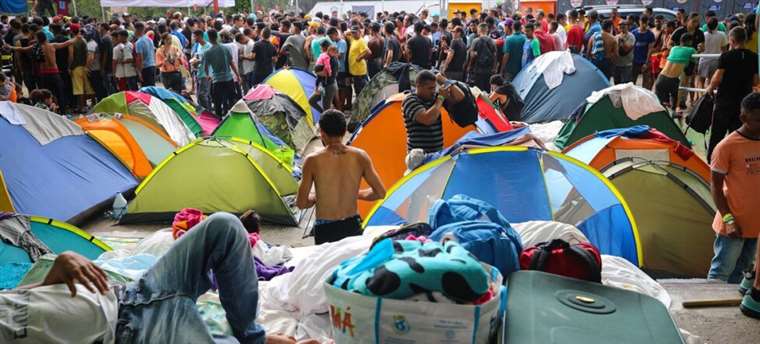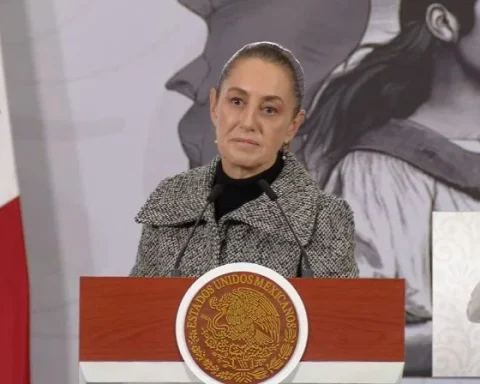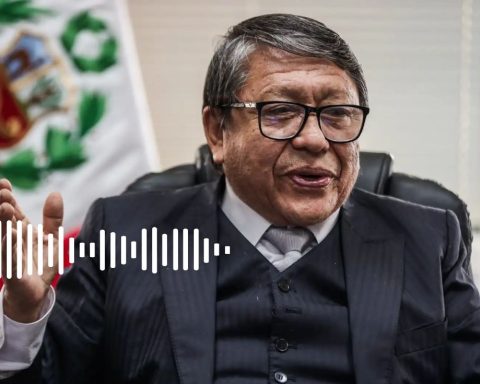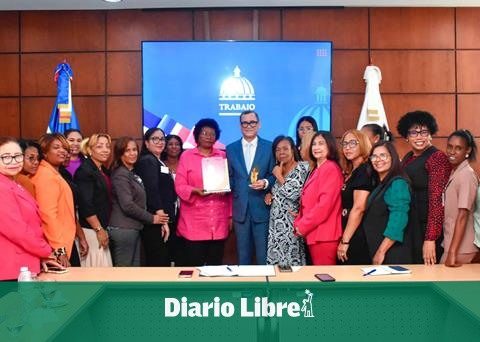December 5, 2022, 9:39 AM
December 5, 2022, 9:39 AM
The United Nations Organization launched a regional plan with which expects to raise $1.72 billionto support the care of migrants and refugees from Venezuela and their host communities, in 17 countries in Latin America and the Caribbean.
In the region six of the 7.1 million migrants and refugees have settled or are in transit who have left Venezuela, the largest migratory phenomenon so far known in the hemisphere and one of the largest in the world.
The initiative to care for Venezuelans and host communities becomes the largest coordinated response structure of the UN in the world, since it extends from the northern border of Mexico to Patagonia in the extreme south of Chile.
The United Nations Agency for Refugees (Acnur) and the International Organization for Migration (IOM) will be the entities that will lead the initiative, through its Regional Interagency Coordination Platform for Refugees and Migrants from Venezuela (R4V).
“Refugees and migrants from Venezuela cannot be forgotten. Many have seen their lives paralyzed and millions struggle to feed their families. or find opportunities to rebuild their lives,” said Eduardo Stein, who was vice president of Guatemala and is the coordinator of R4V.
The plan will focus on the provision of humanitarian assistance, socioeconomic integrationemployment opportunities, education and regularization, as well as social welfare programs for migrant and host communities.
Migrants “are eager to contribute their knowledge, skills and creativity to their host communities, and have been doing so, but they need our support to overcome their most pressing challenges,” Stein said.
The plan will try to respond to a more complex regional context that envisions a growth of Venezuelans in various countries in the region, which may reach 7.4 million in 2024, as well as the emergence of new multidirectional flows.
The countries of the region with the largest number of Venezuelan migrants and refugees are Colombia (2.5 million), Peru (1.5 million), Ecuador (502,000), Chile (448,000), Brazil (388,000), Argentina (171,000), Panama (145,000), Dominican Republic (115,000), Mexico (87,000) and Trinidad and Tobago (35,000).
According to a recent R4V study on their needs, 73% of that population requires assistanceand the new plan expects to serve 2.3 million migrants in 2023 and 2.14 million in 2024.
many venezuelans have had problems accessing food and housingproduct of the increase in the cost of living in the region as a consequence of the war in Ukraine, among other causes, and employment opportunities, largely due to the lack of regularization of their status.
In Ecuador, for example, 86% of Venezuelan migrants say they do not have enough income to meet their basic needs, and in Chile 13% of them live below the poverty line.
Despite the reopening of classrooms, many refugee and migrant children and adolescents continue to face obstacles in accessing educational services in their host countries, especially due to the lack of places or space in schools.
Along with leading initiatives in that direction, the R4V plan expects to serve more than 400,000 Venezuelans in multidirectional transit next year along the Andean Corridor (Bolivia, Colombia, Ecuador, and Peru), as well as between Colombia and Central America and Mexico. .
New control mechanisms, enacted by several countries to limit the irregular flow of refugees and migrants, especially to the north, have contributed to making flows and movements more complex.
This has caused migrants who cannot integrate in the affected countries to consider returning to their previous host countries or returning to their country of origin.
Throughout 2022 UN agencies detected an increase in the use of dangerous irregular routes and informal border crossings, due to lack of documentation, increased visa requirements, irregular status, and lack of livelihoods or prospects for socio-economic integration.
This deterioration has further exposed refugees and migrants to the risks of traffickingas well as exploitation and abuse at the hands of smugglers, traffickers and other criminal networks.
Factors such as widespread irregularity, loss of or competition for livelihoods, limited schooling opportunities and lack of affordable housing have contributed to social tensions, sometimes leading to incidents of xenophobia, discrimination or violence. .
R4V’s Regional Response Plan for Refugees and Migrants 2023-2024 brings together 228 partner entities, including national and international non-governmental organizations.
The previous R4V plan (2021-2022), to serve up to 4.3 million Venezuelans and host communities, collected only a portion of the 1.79 billion dollars initially requested from the international donor community.


















